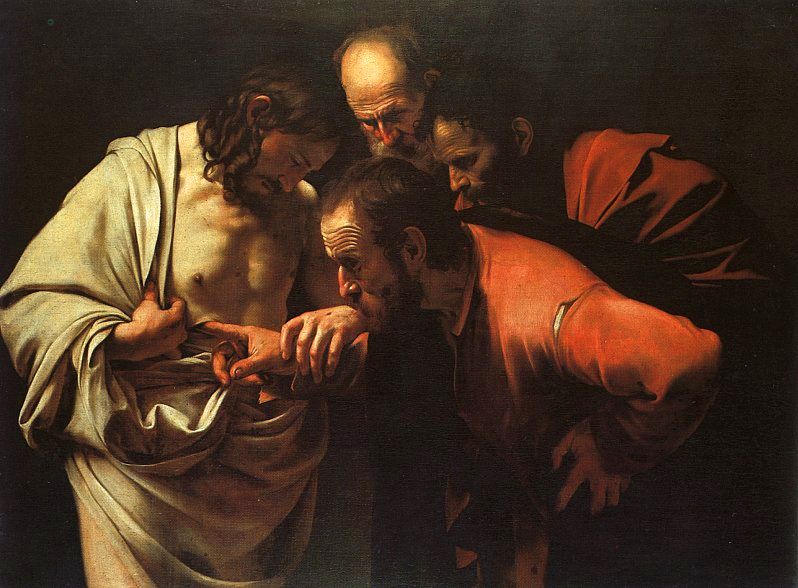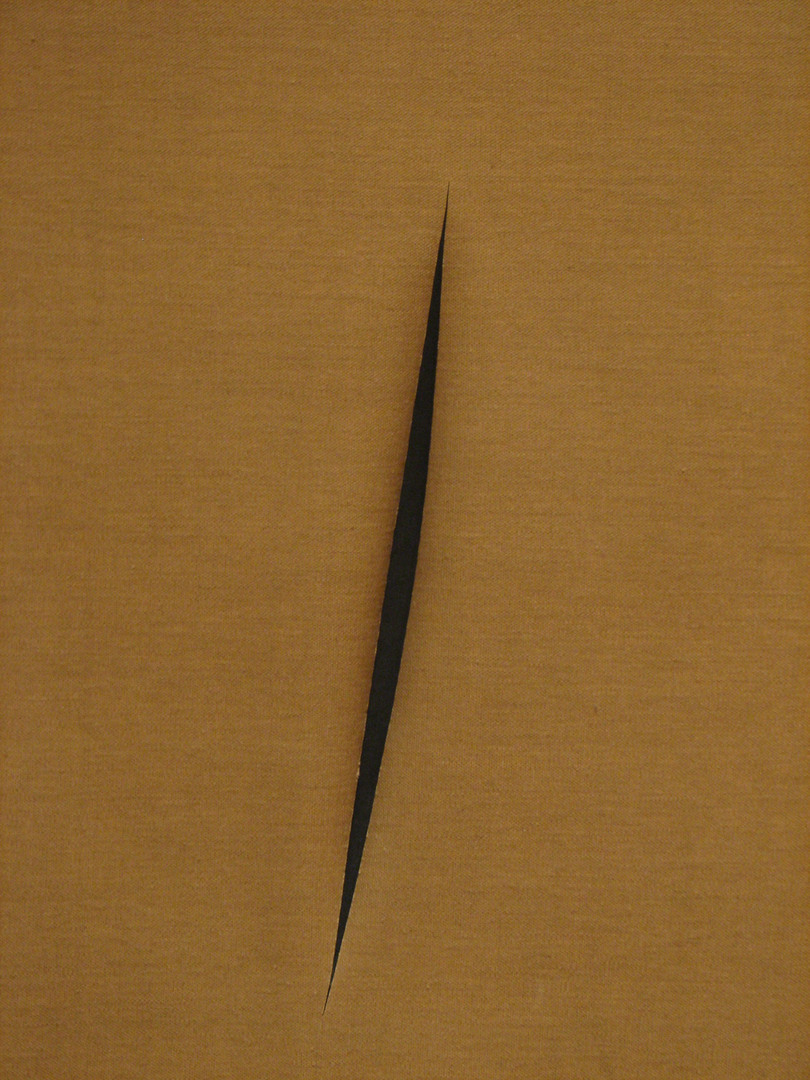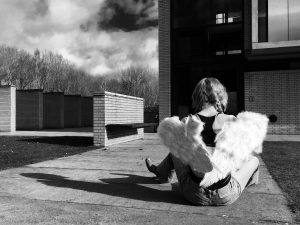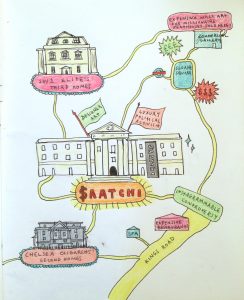
The Incredulity of St Thomas: icon and iconography
by George Townsend | May 20, 2014
The Incredulity of St. Thomas is one of the most recognisable images in all of New Testament iconography. The resurrected Christ – his wounds exposed – stands beside ‘Doubting Thomas’, supposedly the most skeptical of the twelve apostles. As Christ raises his burial shroud, his chest is opened up to the viewer; Thomas leans in, and stretches a quivering forefinger out toward the fifth stigmata.
It would be easy to sensationalise this moment. You can dwell on the uncanny interplay of the two figures’ bodies, or tentatively introduce an element of homoeroticism. But even when described in the blandest terms, this is a moment that appears to be defined by sensation, and even by sex, if only in that its almost gruesome physicality revolves precisely around the penetration of one body by another. The account that I’ve given of the moment we recognise, most famously brought to life by Caravaggio, is one that both falls short of and overshoots the violence of its Biblical source.

The disparity between the Biblical narrative and the iconography it has generated is significant. In John Chapter 20, Christ appears to Thomas’s fellow disciples while Thomas himself is absent. On his return, Thomas’s friends tell him about Christ’s resurrection, and the doubter responds as follows: “Except that I shall see in his hands the print of the nails, and put my finger into the print of the nails, and thrust my hand into his side, I will not believe.” Eight days pass, Jesus comes again, and this time Thomas is confronted by his Lord: “Reach hither thy finger, and behold my hands, and reach hither thy hand, and thrust it into my side, and be not faithless, but believing.”
The “thrust” of the whole hand in the Biblical account surpasses the less violent imagery with which we are familiar. Yet the two verses that conclude this passage also leave the actual series of events radically open to interpretation. Despite the visceral immediacy of the image evoked by Christ’s command – of Thomas thrusting his hand into Christ’s chest – it is left unclear whether that command is actually followed. All we are left with is what Thomas says: “My Lord, and my God”. Then in the final verse, Christ appears to draw out the moral of the story, though Thomas is figured as completely anti-exemplary for the average believer: “Jesus said unto him, Thomas, because thou hast seen me, thou hast believed: blessed are they that have not seen, and yet have believed”.
In the context of Christian iconography, Thomas is the archetypal skeptic. There is something absurd, then, in the notion of him having his request answered so literally, and of such an answer prompting real belief. We do not know for sure whether the wounds really are touched, or only seen. But it is nonetheless a physical experience that makes Thomas change his mind; he is not converted through some gradual process of indoctrination, or by theological sleight-of-hand. This aspect of the image evokes a profound sense of the absurd. It touches on the common desire for knowledge of what lies beyond the immediate, and yet depicts precisely that kind of knowledge which is denied.

In a niche outside the chapel of Orsanmicele in Florence, there stands a bronze statue known as ‘The Christ and St. Thomas’. The statue was designed by Andrea del Verrocchio (mentor to da Vinci) and commissioned by the Florentine Merchants’ Guild in the latter half of the fifteenth-century. Each of the city’s guilds had been ordered to fill the niches of the chapel with statues representing their respective roles. The question of who decided on the scene with Christ and Thomas is open for debate, but the significance of that decision is fairly clear. Part of the Merchants’ Guild’s responsibility was to act as a judicial body in the settlement of financial disputes. Hence the statue come to represent the contemporary judicial process: the squabbling citizens of Florence are collectively figured as St Thomas, and – boldly – the Medici-controlled Merchant’s Guild is figured as Christ, a man with God-given authority gracefully providing his subjects with justice.
However, as art historian Andrew Butterfield argues, the statue is also typical of the pre-modern conception of the Incredulity in a broader sense: “Thomas’s doubt was not a morally neutral act but the product of hardness of heart, and it was deeply sinful. Christ’s actions were motivated by mercy and charity”. This take on the Incredulity is visible in the statue’s depiction of dynamic movement – Christ actively opening himself up to Thomas and to the viewer. Filling a niche designed for one statue with a pair of interactive figures presented Verrocchio with a challenge in formal terms, but also gave him the opportunity to break the ‘fourth wall’ effect that such niches ordinarily produce. Thomas is pictured stepping in, one foot outside of the frame, so that the space occupied by the two men ceases to be simply decorative. Rather, the niche begins to suggest the room in which the miracle originally occurred. Christ, on the other hand, is leaning back and away to accommodate for Thomas’s gesture. Though this this sets Christ off to one side to some extent, it also draws the wound on his chest into the exact centre of the niche.
In Verrocchio’s statue, then, the movement of Christ as he opens up his body to Thomas is key, rather than the moment of contact. Christ is rendered as very obviously divine, through his halo and his raised position. The potential absurdity of the moment is down-played by the focus on the process, rather than the moment, of truth being obtained.
By contrast, the sense of obvious hierarchy between disciple and Lord, human and divine, is markedly absent in Caravaggio’s painting, completed in the early seventeenth-century; perhaps the only part of the image that could be seen to signify Christ’s divinity is the wound itself, this time penetrated by Thomas’s finger, and oddly bloodless.
Caravaggio’s painting was also produced in a judicial context, albeit one that was rather more personal to the artist. In the same year in which he painted the Incredulity, Caravaggio was briefly imprisoned for publishing scurrilous poetry against a rival who had been preferred to Caravaggio for the painting of a resurrection scene, for a Jesuit church in Rome. It’s tempting to suggest, then, that Caravaggio’s piece constitutes a critique of the old-fashioned and idealised justice system actively promoted by Verrocchio’s sculpture.
The piece focuses on the acquirement of first-hand evidence, rather than the clemency of the presiding authority. Belief is acquired through the prying finger of the skeptic, rather than in the identity of the master-figure, and Caravaggio verges on heresy here as a result. Jonathan Sawday has argued that Caravaggio “seemed to be responding to a new emphasis, in the realm of…natural philosophy, on the vital importance of personal experience”. So here Thomas isn’t understood in terms of deeply sinful hard-heartedness. Instead he epitomizes the virtues associated with the emerging post-Baconian philosopher – the scientist. However, Sawday himself runs the risk of idealizing Thomas, through his emphasis on Thomas’s supposed empiricism. The detrimental effect of this being that the more primitive and visceral shock of the image is forgotten.

An ostensibly much more modern work of art – ‘Spatial Concept, “Waiting”’ (1960) by Lucio Fontana – sublimates the point I’ve been attempting to explore with respect to the Incredulity more generally. The piece consists of an untreated canvas stretched within a plain wooden frame. Down the middle of the canvas there is a single slash, made by Fontana with a long and sharp knife. Beyond this slash there is only darkness – the frame is backed with a dark gauze in order to produce this effect.
Verrocchio and Caravaggio present the same moment in radically different ways, but whilst the former may be read as highly ideologically engaged, and the latter arguably no less so, both have the potential to shock the modern observer and to provoke a sense of the absurd in a way that is both apolitical, and vitally connected to the breaking of an image. Both, through their representation of the sacred body-image being broken or penetrated, draw attention to their own artifice; they force us to feel the distinction between the position of Thomas with respect to Christ and our own.




